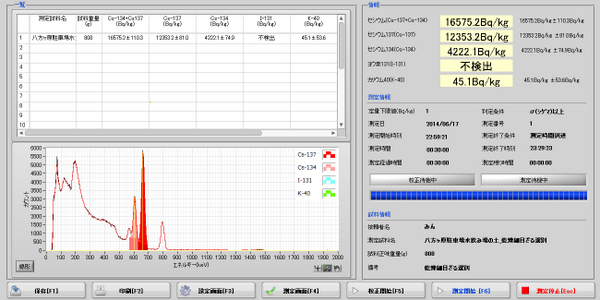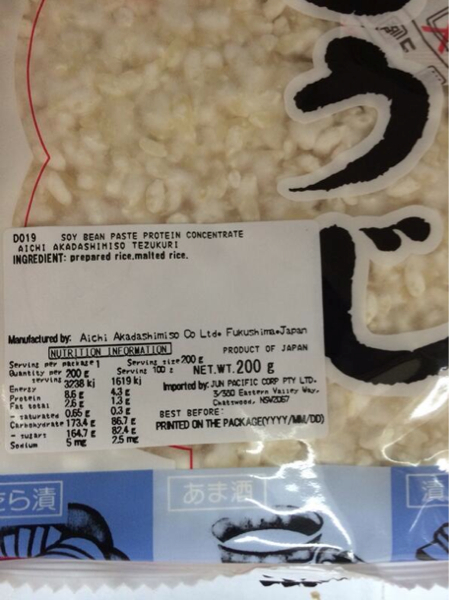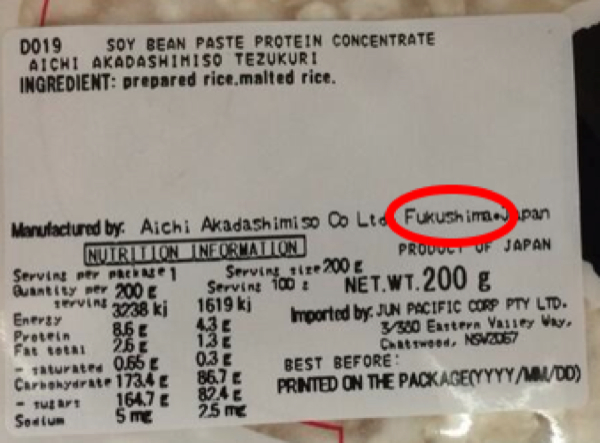Ex SKF.....
Google Maps finally updated the satellite photograph of Fukushima I Nuclear Power Plant. It shows the more-or-less current plant condition in great details.
(Click to enlarge the screenshots; Google Map at the bottom of the post.)
Fukushima Diary.....
#Fukushima I NPP on Google Maps
Google Maps finally updated the satellite photograph of Fukushima I Nuclear Power Plant. It shows the more-or-less current plant condition in great details.
(Click to enlarge the screenshots; Google Map at the bottom of the post.)
Instead of mangled steel beams and trusses completely covering the Reactor 3 operating floor, you actually see the Spent Fuel Pool, with water, with the half-submerged fuel handling machine:
Contrary to a belief still popular with people around the world (including Mr. Koide of Kyoto University) that the Reactor 4 building is still a smoking wreckage about to collapse at any moment, it now actually looks like this:
Removal of fuel assemblies from the Reactor 4 Spent Fuel Pool is now 70% finished, as of 6/16/2014. You can still see a lot of debris on the east side (ocean side) of the Reactor 4 building. Debris immediately around the reactor buildings has extremely high radiation contamination, according to the survey by TEPCO (I'll try to locate the document later).
Probably to suppress radiation and to prep for the frozen soil impermeable wall construction, the roads around the reactor buildings and the turbine buildings look to be paved with metal plates. Right where the trailer with Hitachi logo on top is where the frozen soil impermeable wall is being constructed near Reactor 1:
Probably to suppress radiation and to prep for the frozen soil impermeable wall construction, the roads around the reactor buildings and the turbine buildings look to be paved with metal plates. Right where the trailer with Hitachi logo on top is where the frozen soil impermeable wall is being constructed near Reactor 1:
Almost all trees have been cut to reduce radiation levels inside the plant. It's particularly apparent around the wells to draw groundwater for the groundwater bypass scheme. This location used to be covered with ever-green trees.
A pile of what looks to be low-radiation waste and debris, near the groundwater bypass wells:
There are two barges inside the plant harbor; you can see the silt screen that somewhat separates the water in the open channel in front of the water intakes for the reactors:
At the southern end of the plant harbor, you can see the wall of steel pipe sheet pilesin the water in an attempt to stop groundwater from flowing into the harbor and flowing out of harbor:
The high-radiation strip between the turbine building and the plant harbor seems to have been cleared of debris enough for various works. Here again, you can see the metal plates on the ground to lower the radiation for the workers:
Fukushima I NPP on Google Maps:
Fukushima Diary.....
Highest level of Tritium measured from a bypass well
Posted by Mochizuki on June 18th, 2014 · 19 Comments
Following up this article..
From Tepco’s report, tritium density from the bypass well mentioned above became the highest since they started measuring.
It was 2,000,000 Bq/m3 from the sample taken on 6/16/2014. It’s exceeding the desired safety limit by 500,000 Bq/m3.
However Tepco states the total Tritium density to discharge to the Pacific would be only 300,000 ~ 400,000 Bq/m3, which is under the desired safety limit because they mix it with lower level of contaminated water.
Tepco to transfer a part of fuel from Reactor4 pool to another spent fuel pool due to the lack of space
Posted by Mochizuki on June 19th, 2014 · No Comments
Tepco ends up transferring fuel from a spent fuel pool to another spent fuel pool.
On 6/18/2014, Tepco announced that they are running out of the space for Reactor4 pool fuel removal. Originally they planed to transfer all of 1,535 fuel assemblies to the common pool, which is more secure.
When 311 took place, the common pool already stocked 6,377 fuel assemblies where the capacity is 6,750. In order to accept additional fuel from SFP4 (Reactor4 Spent Fuel Pool), they were transferring the fuel by using casks.
However it turned out that they cannot make space for 157 fuel assemblies from SFP4. As a result, Tepco has decided to transfer 180 new fuel assemblies from SFP4 to Reactor6 pool.
As the reason why they cannot make space in the common pool, Tepco is stating they are taking long to get the approval of using casks. On the other hand, Tepco also announced that they are going to try to increase the production capacity of the casks. It therefore is likely to be simply because Tepco is not capable of producing casks fast enough.
At the moment of 6/16/2014, Tepco has transferred 22 of 204 new fuel assemblies and 1,056 of 1,331 spent fuel assemblies to the common pool. They still state they can complete all the transfer by the end of 2014.
17,000 Bq/Kg of Cs-134/137 from soil of a public drinking fountain in Yaita city Tochigi
Posted by Mochizuki on June 19th, 2014 · 3 Comments
A Japanese citizen posted on Twitter his radiation analysis result to measure 17,000 Bq/Kg of Cesium-134/137.
The sampling date was 6/17/2014. It was soil taken from a public drinking fountain of Happo-gahara parking lot (The picture and map are attached below) in Yaita city Tochigi.
Cs-134 density was 4,221 Bq/Kg, Cs-137 density was 12,353 Bq/Kg (16,574 Bq/Kg in total).
It is not clear if the soil could have been mixed with water, but still extremely high level of radioactive material is found in Kanto area.
↑ The parking lot where the public drinking fountain is located.
Preceding frozen water wall hasn’t worked since April
Posted by Mochizuki on June 17th, 2014 · 9 Comments
Related to this article.. Fukushima worker “Frozen wall was originally designed to stand with clay wall but they removed to cut the cost.” [URL]
A preceding part of the frozen water wall hasn’t been frozen for over a month, according to Tepco.
Tepco has started installing the frozen water underground wall to isolate 4 reactor buildings in Fukushima plant. Preceding the wall, Tepco installed the same wall in underground trench of the seaside of Reactor2 and 3.
Approx. 11,000 t of highly contaminated water is assumed to be retained in this trench to leak to underground and the Pacific.
This was an attempt to stop additional contaminated water flowing from reactor2 turbine building to this trench by freezing water like a wall. However even though they have been trying to freeze the water since the end of April, the water hasn’t been frozen by now.
They assume it is because the inner structure prevents water from being frozen and also the contaminated water is still flowing.
M5.3 hit south offshore Chiba
Posted by Mochizuki on June 17th, 2014 · No Comments
Following up this article.. 2 quakes over M5.5 occurred twice around Fukushima offshore [URL]
Another major earthquake hit the Pacific side of Japan again.
At 2:42 of 6/17/2014 (JST), M5.3 occurred in South offshore of Chiba.
Seismic intensity 3 was observed in South part of Chiba.
[Photo] Japanese rice ingredient manufactured in Fukushima is sold in Australia
Posted by Mochizuki on June 16th, 2014 · 4 Comments
↑ This is what is found in Australia.
↑ The label clearly states “Fukushima”.
A Japanese reader posted that they found a Japanese rice ingredient “malted rice” sold in Australia.
From their request, Fukushima Diary keeps them anonymous.
Malted rice is used to make Miso and other rice-related fermented food at home. The manufacture is called Aichi Akadashimiso Co. Ltd. located in Aichi prefecture.
However the label states “Fukushima. Japan”.
Related article.. Japan budgets 22 billion yen to increase food export / 14 times much as 2012 [URL]
New TV ad of support by eating emphasizes eating “mushroom”
Posted by Mochizuki on June 15th, 2014 · 19 Comments
Following up this article.. [Support by eating] Idol group to fight harmful rumor “Just eat it for starters, and go to Fukushima” [URL]
The new TV AD was released on 6/7/2014. It will be broadcast in Kanto and Kansai district and Fukushima prefecture until 6/29/2014.
In the TV AD, the idol group TOKIO promotes tomato, meat, asparagus etc..
It emphasizes eating shiitake mushroom in the end.
Mushroom is known to concentrate Cesium-134/137 from Chernobyl accident. High density of Cs-134/137 has been measured from mushroom since 311 as well.
(cf, [Distributed ?] 16,740 Bq/Kg from PROCESSED shiitake mushroom [URL 2])
Related article.. Japan budgets 22 billion yen to increase food export / 14 times much as 2012 [URL 3]
The TV ad can be seen from this link ↓
2 quakes over M5.5 occurred twice around Fukushima offshore
Posted by Mochizuki on June 16th, 2014 · No Comments
2 major quakes happened around Fukushima offshore early in the morning of 6/16/2014, according to Japan Meteorological Agency.
At 3:19AM of 6/16/2014 (JST), M5.6 hit Ibaraki prefecture offshore. The maximum seismic intensity was 3 observed in the coastal area of Ibaraki and Fukushima.
Only 2 hours later, M5.8 hit Fukushima prefecture offshore (5:14AM of 6/16/2014 JST). The maximum seismic intensity was 4 in coastal area of Fukushima prefecture as well.
Tepco conducted the plant patrol from 5:27 to 7:05AM in reactor1 ~ 6 to report no abnormality was confirmed.
Energy News.....
NHK, June 16, 2014: Workers at the crippled Fukushima nuclear plant say their effort to freeze radioactive water in underground tunnels hasn’t gone as planned. In April, they began pouring chemical solutions into tunnels at the No.2 reactor. They hoped to freeze the water to stop it flowing out to the sea. But tests show the water remains above freezing temperature. [Tepco] believes objects in the tunnels are preventing the coolant from spreading evenly. They also said running wastewater is slowing the process.

AFP, June 17, 2014: Fukushima operator struggles to build ice wall [...] Tepco says it is behind schedule with scheme because temperature of pipes sunk into ground is not low enough [...] it is having trouble [...] Tepco said on Tuesday that a smaller, inner ice wall whose pipes it sank earlier to contain the already-contaminated water was proving difficult. “We have yet to form the ice stopper because we can’t make the temperature low enough to freeze water,” a Tepco spokesman said.
Reuters, June 17, 2014: [Tepco] said on Tuesday the company’s efforts to freeze radioactive water in the facility had hit a glitch and may take longer than expected. [Tepco] planned to freeze some of the 11,000 tonnes of toxic water pooled in trenches below two of the reactor buildings at the plant and began construction of the project in April, but said the water has not frozen over yet. [...] [A Tepco] spokesman said fluctuating water levels in the tunnel under the No. 2 reactor building were preventing the water from freezing over.
Chris Harris, former licensed Senior Reactor Operator and engineer, June 12, 2014 (at 25:45 in): I talked to a colleague of mine who is an expert in the area of cleanup, he was on the TMI cleanup project and a renowned expert. I said “What do you think of this ice wall?” He curled his lip and said, “Nah, that’s not going to get it. … They’re wasting their time with the ice wall.” Plus the added negatives of shifting, basically liquefying material, liquefying the ground around it. It can cause sinkholes… it could also create more problems with an ice dam. >> Full interview here
















No comments:
Post a Comment